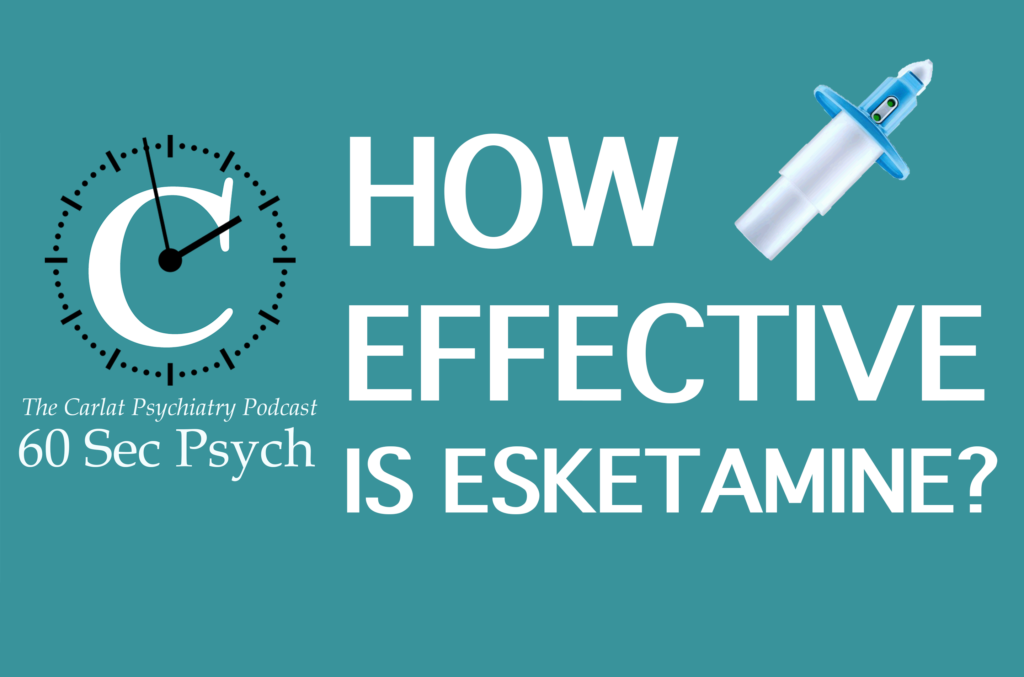It's been a year since esketamine's (Spravato) debut for treatment resistant depression, and the numbers are in: to treat and to harm. A review of Citrome L, DiBernardo A, Singh J. 144 Esketamine Nasal Spray for Management of Treatment-Resistant Depression: Number Needed to Treat, Number Needed to Harm, Likelihood to be Helped/Harmed. CNS Spectr. 2020;25(2):291‐292. [Link]
Published On: 5/16/20
Duration: 1 minute, 37 seconds
Transcript:
How effective is esketamine?
It’s been a year now since the release of esketamine – brand name Spravato – for treatment resistant depression, and the numbers are in. Leslie Citrome and colleagues pulled together 3 trials to calculate the number need to treat or harm in this industry sponsored paper from CNS Spectrums. Here’s the results, and remember that when we talk about number needed to treat, less than 10 is decent and smaller is better, but for number needed to harm we want to see big numbers…. Meaning you’d need to treat a lot of people to have a bad outcome.
The number needed to treat was 8 for response and 6 for remission. That’s in the range of most therapies for treatment resistant depression.
But how many patients are harmed by esketamine? The number needed to harm was 5 for most side effects, meaning about 1 in 5 patients will have the side effect. Those side effects were: dissociation, vertigo, and nausea; while dizziness and altered taste were a little less common with number needed to harm of 7-9.
Esketamine did a little better when it came to long term prevention, where the number needed to treat was 4 people to prevent 1 relapse. Long-term drop out rates were also good: with only 1 in 178 patients choosing to stop maintenance esketamine.
Got feedback? Take the podcast survey.


_-The-Breakthrough-Antipsychotic-That-Could-Change-Everything.jpg?1729528747)



